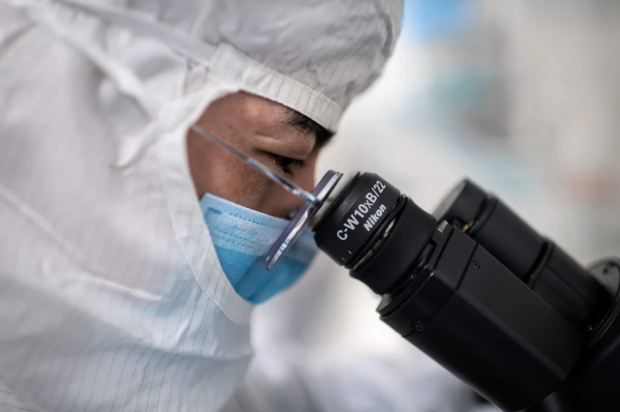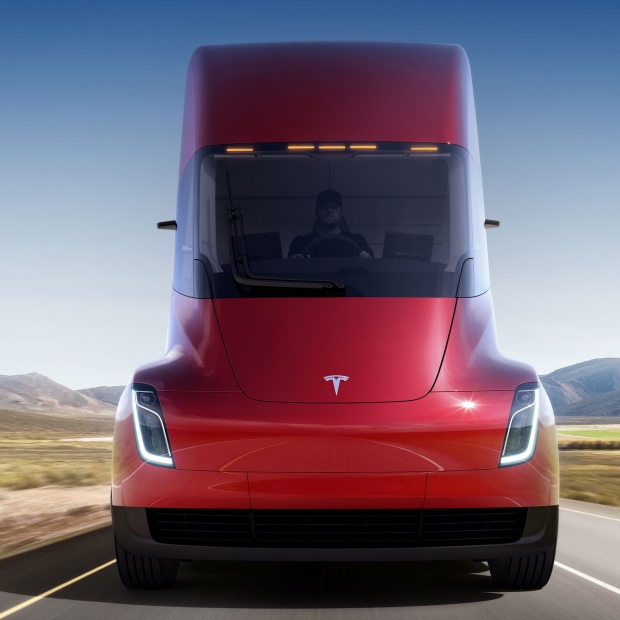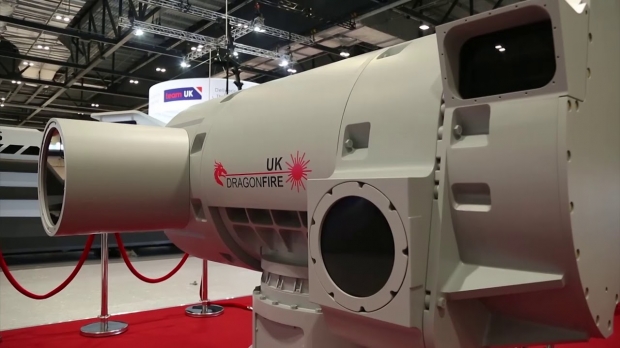Science, Space, Health & Robotics News - Page 335
This Earth-shaking meteor exploded with a force of 440 pounds of TNT
A meteor coursed through the sky over Vermont on March 7th, causing a series of Earth-shaking booms as it burned up by entering the atmosphere.
According to NASA Meteor Watch, the meteor flew through the atmosphere at speeds of about 42,000 mph, and appeared as giant bright fireball. As the meteor was entering our atmosphere it released the equivalent of 440 pounds of TNT, which suggests that the meteor was around 10 pounds in weight, and 6 inches in diameter.
A local news station reported that people were calling in, saying that they heard a "loud boom and body-rattling vibration" as the meteor passed. Chris Hrotic, a commenter on NASA's initial post about the event said, "I was fortunate to hear and see it by the Missisquoi River at the Missisquoi Wildlife Refuge in Swanton, VT, just before sunset. No loud boom as reported by others, but a rushing sound that made me look up at just the right moment. It was extremely bright and absolutely spectacular!"
Continue reading: This Earth-shaking meteor exploded with a force of 440 pounds of TNT (full post)
France kicks off its first-ever military drills in space
The militarization of space is ramping up with France starting its very first military exercises in space, ensuring it can protect its satellites in orbit from attack.
France recently announced its new Space Command, with Michel Friedling as its head, who said the space-based military exercise is a "stress test of our systems" and that the exercise "were a first for the French army and even a first in Europe". He also told reporters in Toulouse in southwest France at Space Command HQ: "A series of events appear and create crisis situations or threats against our space infrastructure, but not only this".
The military exercises in space started this Monday, and will run all week through to Friday. As for France's own Space Command, the space-based arm of its military was announced in 2019 and is said to have staff topping 500 by 2025. Defence Minster Florence Parly said at the time of announcing Space Command: "Our allies and adversaries are militarising space... we need to act".
Continue reading: France kicks off its first-ever military drills in space (full post)
Scientists 'speechless' at what crash landed in this man's driveway
Scientists have been left "speechless" after a man discovered something "mind-blowingly" rare scattered on his driveway.
A man from the UK heard a "rattling noise" outside of his house, and when he woke up the next morning and went outside, he was surprised to see meteorite fragments all over his driveway. Being the kind samaritan he is, the man picked up all of the pieces of meteorite and took them to the Natural History Museum for researchers to look at them.
Professor Sara Russell, a researcher at the Natural History Museum, said she was "speechless with excitement" and, "There are about 65,000 known meteorites in the entire world, and of those only 51 of them are carbonaceous chondrites that have been seen to fall like this one." Another researcher, Dr. Ashley King, said the man did a "fantastic job" collecting the fragments considering he had no idea what it actually was at the time.
Continue reading: Scientists 'speechless' at what crash landed in this man's driveway (full post)
This infectious disease that kills half its victims is on the rise
Researchers and scientists have issued a warning for an infectious disease that they say is currently on the rise.
The infectious disease is called diphtheria and was previously thought to nearly be vanquished, but it is now making a return as new cases have been increasing over the years. The infectious disease is caused by strains of the bacteria Corynebacterium diphtheriae and is spread much like COVID-19 by respiratory droplets, and in some cases, skin contact.
Symptoms of diphtheria include a sore throat and mild fever. However, within a few days, the toxins that the bacteria produces can kill off many cells in the infected person's throat, which can cause a buildup that makes it difficult for the person to breathe. Additionally, people infected with diphtheria can develop a swollen "bull neck" due to the swollen lymph nodes. Most shockingly, if the infection is left untreated the toxin can make its way into the bloodstream, causing significant internal damage that kills about half of people that are infected.
Continue reading: This infectious disease that kills half its victims is on the rise (full post)
This abandoned Russian town is frozen in time, these images prove it
There is something quite creepy about abandoned cities and towns, and there is even something creepier when they are photographed frozen in time.
One photographer took a drone to a once population coal-mining town called Vorkuta, which is just north of the Arctic Circle. The town is now abandoned and has been completely frozen in time, with buildings covered in snow and ice. The temperatures there are as low as 60 degrees below zero and can even drop below 60 in the winter months.
The photographer behind these incredible shots is Maria Passer, who is based in Moscow. Maria traveled to the eerie town and captured several birds-eye-view images, which can be seen above and below. Maria explained to CNN, "To attract miners to live in hard climate conditions the salaries here were really good. It's really a tragedy that many people have to leave their houses and to go to live somewhere else. But these locations, they have an abandoned beauty. I'm trying to see this, and to show this, in my pictures."
Continue reading: This abandoned Russian town is frozen in time, these images prove it (full post)
SpaceX will blast Starlink internet to planes, ships, trucks and RVs
SpaceX has some world-leading technology with its Starlink internet service already up and in lower earth orbit offering satellite internet access to regular users. But the plans are much more vast for Starlink according to Elon Musk.
In a recent SpaceX filing with the FCC (Federal Communications Commission) where it was requesting permission to install internet terminals on moving vehicles. This is where Tesla, SpaceX boss and Dogecoin enthusiast Elon Musk tweeted out: "Not connecting Tesla cars to Starlink, as our terminal is much too big. This is for aircraft, ships, large trucks & RVs".
SpaceX director of satellite policy David Goldman wrote to the FCC, where he said: "This application would serve the public interest by authorizing a new class of ground-based components for SpaceX's satellite system that will expand the range of broadband capabilities available to moving vehicles throughout the United States and to moving vessels and aircraft worldwide".
Continue reading: SpaceX will blast Starlink internet to planes, ships, trucks and RVs (full post)
This is the deadly undetectable weapon that the Pentagon is afraid of
Back in 2016, U.S. diplomats in Havana began to fall into sickness, and researchers weren't exactly sure why. After some testing, the scientists found that the U.S. diplomats were hit with a microwave weapon.
Radio-frequency (RF) weapons blast the target with a deadly amount of radiation, and for those that don't know, radiation isn't visible to the naked eye, making it one of the most deadly weapons that can be used in warfare. Now, the U.S. military, in particular, the Pentagon and the Defense Health Agency (DHA), are looking for a sensor that can detect radiation levels and be small enough to be equipped by soldiers.
According to the DHA research solicitation, "Without known patterns of R.F. injury to guide diagnosis, it will be difficult to differentiate R.F. injury from other common sources of illness and injury such as heat stroke. This ambiguous symptomology is aggravated by the transient nature of RF energy. Without a sensor it is possible that no residual evidence of R.F. attack will be available."
Continue reading: This is the deadly undetectable weapon that the Pentagon is afraid of (full post)
NASA's brand new Mars rover is powered by Apple's iMac chip from 1998
A new article has revealed quite an interesting fact about NASA's brand new Mars rover that recently touched down on the Red Planet.
In a new article published in NewScientist, we get a deeper understanding of all of the new interesting instruments and components found on the new Perseverance rover. One of the most astonishing facts about Perseverance is that it's using the same kind of chip that Apple used to power the first iMac, but the chips aren't necessarily identical.
Perseverance is equipped with the RAD750, which is a chip that is based on the PowerPC 750 processor from 1998 that is found in Apple's first iMac. The difference between the PowerPC 750 processor and the RAD750 is that the RAD750 is a radiation-hardened processor designed to withstand high-radiation environments such as onboard satellites spacecrafts. RAD750 is designed to withstand up to 1,000,000 Rads, and costs over $200,000. Sometimes it's not all about speed but longevity.
Continue reading: NASA's brand new Mars rover is powered by Apple's iMac chip from 1998 (full post)
Scientists confirm the existence of this eye-catching space phenomenon
A team of scientists from multiple different countries have finally confirmed the existence of an eye-catching space phenomenon.
The findings from the team of scientists were published in the journal Nature Communications back in February, and according to the results, the team was able to prove the existence of space plasma hurricanes. According to Mike Lockwood, a space scientist at the University of Reading and co-author of the study, "Until now, it was uncertain that space plasma hurricanes even existed, so to prove this with such a striking observation is incredible."
The researchers confirmed the existence of a space hurricane that was 1,000 km wide, which is about the same distance as driving from New York to Detroit. A space hurricane isn't like a hurricane on Earth but is somewhat similar in how it works. Instead of water, space hurricanes are a swirling mass of charged electrons, and according to Lockwood, they are created by "unusually large and rapid transfer of solar wind energy and charged particles into the Earth's upper atmosphere."
Continue reading: Scientists confirm the existence of this eye-catching space phenomenon (full post)
Watch this large meteor that was 'too close' burst into a fireball
A security camera has captured a large meteor entering the atmosphere over southern Canada and the northern US.
According to Express.co.uk, witnesses that saw the meteor enter the atmosphere said that its tail was bright green, which is an indicator that the meteor contained iron and magnesium. When the meteor entered the atmosphere, it began to burn up its properties, which is what caused this reported green glow to appear.
The International Meteor Organisation (IMO) reported more than 300 people saying they saw a meteor, some of the reports stated that they saw the meteor hit land. AJ said, "I was surprised how large, bright and close to Earth it seemed. It was very clear and had a glowing burning appearance." Jenna said, "As it travelled over the Earth it looked like it was getting too close for comfort!" To watch a video of the meteor, check out this link here.
Continue reading: Watch this large meteor that was 'too close' burst into a fireball (full post)











